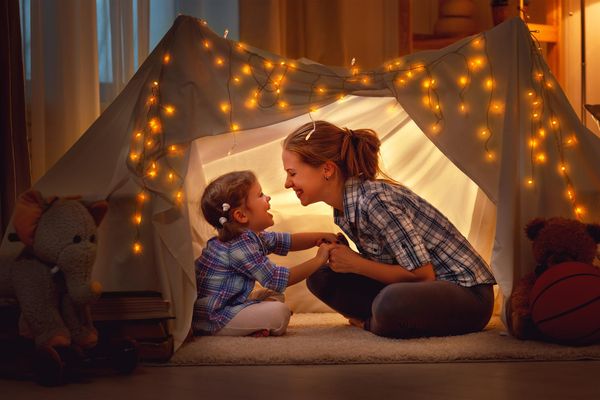If you dread packing school lunches—or your child dreads eating them—it's time to team up to pack some healthier, more enticing options.
School cafeterias are making strides toward serving healthier lunches. New federal nutrition standards require schools to offer more fruits, vegetables and whole grains and to limit the sodium, calories and saturated and trans fats in school foods. And the School Nutrition Association's 2012 Back to School Trends Report shows that schools are complying.
Over 55% of the 579 school districts surveyed offer self-serve salad or produce bars, in addition to the traditional serving line. And a growing number of schools provide healthy grab-and-go options, such as prepackaged salads, whole fruit and packaged produce like bags of baby carrots, grapes and sliced apples.
But, if your child goes through the school lunch line and chooses French fries instead of broccoli and fruit cobbler over fresh fruit, lunch can be a nutritional disaster.
So, what's a parent to do? Start by talking to your child about what nutritious foods he or she really likes, and then think of creative ways you can put those in a lunch bag. For the younger set, tuck in a note on a napkin encouraging them to enjoy their lunch.
7 Tips for Healthier Lunches
Here are seven tips to get you started.
- Variations on a PBJ theme. If your child really likes peanut butter and jelly, try some healthier variations. First, start with whole-wheat bread (for white-bread diehards, they sell white whole-wheat sandwich bread). Instead of jelly, add fresh fruit like bananas, apples or grapes. You can create a peanut butter and strawberry wrap by topping a tortilla wrap with peanut butter and thinly sliced strawberries, and then rolling it, cutting it in half and sealing securely in plastic wrap for the lunch bag. Tip: To avoid soggy bread, spread a thin coat of peanut butter on each slice of bread and put the fruit in the middle.
- Snick-snack lunch. The Urban Dictionary defines snick-snack as a small snack. So on snick-snack days, skip the sandwich and pack a bag full of fun—and healthy—finger foods. Some options: fresh fruit, like apples, berries, pears, grapes, melon balls or cubes, bananas and oranges; low-fat string cheese or other low-fat cheeses cut in cubes or rolled up; nuts (did you know they may promote brain health?), sunflower seeds or granola; rice cakes or whole-wheat crackers; celery sticks with peanut butter or low-fat cream cheese and raisins on top (ants on a log); and other fresh veggies like carrots, cucumbers, bell peppers, cherry tomatoes and broccoli florets, with low-fat dressing for dipping. Tip: If your child won't eat a whole apple or pear (because of braces or preference), use an apple slicer/corer to quickly cut it into eight slices and toss in a plastic zip-top bag with a squirt of lemon or lime to keep the sections from browning.
- Salad days. Many children, especially preteens and teens, love salads, so why not pack one for lunch? Prepare the basic ingredients the night before (some takeout containers make good salad bowls) and pop the salad in the fridge till morning. For a basic salad: salad greens, cherry tomatoes, celery, carrots and cucumbers. Then let your child choose some favorite add-ons: low-fat cheese, fresh or dried fruit, bell peppers, toasted nuts, croutons, artichoke hearts, avocado, olives, sliced turkey or canned tuna. Put crunchy toppings in a separate container to add at the last minute. Tip: If you use bottled dressing, choose low-fat. Better still, make a jar of simple vinaigrette; then put what you need in a small, sealable plastic container for the lunch bag—and put that container in a zip-top bag for good measure.
- Fruits and veggies, front and center. Use an eight-section slicer/corer to quickly cut a whole apple or pear, and put about 2 tablespoons of peanut butter in the middle to hold the sections together. Pop it in a cute plastic apple container (available online), and it will be the hit of the lunch table. If your child likes veggies, give them center stage. Spread whole-wheat bread, pita or tortilla wrap with hummus, tapenade or pesto—or a tasty blend of pesto and plain yogurt. Top with your child's favorite shredded or chopped veggies: tomatoes, cukes, peppers, squash, pickles, celery, carrots, sprouts, lettuce. Tip: Add low-fat cheese, nuts or hard-boiled egg if you want extra protein.
- It's a wrap. Kids sometimes find wraps to be more fun than plain ol' sandwiches. You can put almost anything in a wrap, but it helps to start with something moist like hummus, mustard, tapenade, pesto or low-fat cream cheese to spread on it. Then you can add thin slices of turkey or low-fat cheese or just about anything: chopped olives, nuts, veggies, fruits, egg salad, tuna salad … the list is endless. A favorite for teenagers is the chicken Caesar wrap: a little canned or leftover chicken, chopped romaine lettuce, sprinkling of grated Parmesan, and a drizzle of low-fat Caesar dressing. Tip: For young children, cut wraps into bite-sized pinwheels.
- Fill up the thermos. For a warm winter lunch, put leftover soups or pastas in a thermos. Favorites may include chicken noodle soup, chili, beef stew, mac and cheese, spaghetti or chicken and dumplings. Tip: To keep the food warm longer, preheat the thermos by filling with hot water for a couple of minutes before adding the lunch contents.
- Drink up. Encourage your child to drink and enjoy plenty of water. Soda is considered a primary cause in the obesity epidemic that now affects about 17 percent (or 12.5 million) of American children. So, make sure you have a safe, BPA-free water bottle to send to school with your child's lunch. Alternatively, pack a small 100% fruit juice box or pouch. Older kids may prefer lemonade or flavored waters, but try to limit the sugar content. Tip: Freeze a juice box or pouch (or a yogurt cup) in the freezer to multitask as an ice pack in your child's lunch.
Speaking of ice packs, it's important to use an insulated lunch bag and keep items that may spoil chilled until lunchtime. If you aren't using frozen juice boxes, buy a couple of lunch-box sized ice packs. Tip: One isn't enough because you may forget to put it back in the freezer when it comes home in the lunch bag.
Last but not least, talk to your children about their lunches. Ask what they ate. Talk about what their friends ate that looked good. Don't get in a rut. You will encourage more varied, healthier eating when you make lunches fun and interesting.







